On October 30, 2012, a group of civil society activists in Moscow freed twelve slaves from the Produkty grocery store, owned by a Kazakhstani couple, Zhansulu Istanbekova and her husband, Saken Muzdybayev. Nearly all of those released were women from the city of Shymkent in Kazakhstan, which is also Istanbekova’s hometown. Istanbekova had at various times invited them to Moscow to work in her store. Once there, they had been robbed of their passports and forced to work without pay for twenty hours a day. They were fed a slop made from rotten vegetables, and they were beaten and raped. Some of the freed women had arrived at the store recently, but others had worked as slaves there for as long as ten years. Many of them had given birth while in captivity. Istanbekova had disposed of these children at her discretion. She shipped some of them to Kazakhstan, later declaring them dead, while others had served her family from an early age.
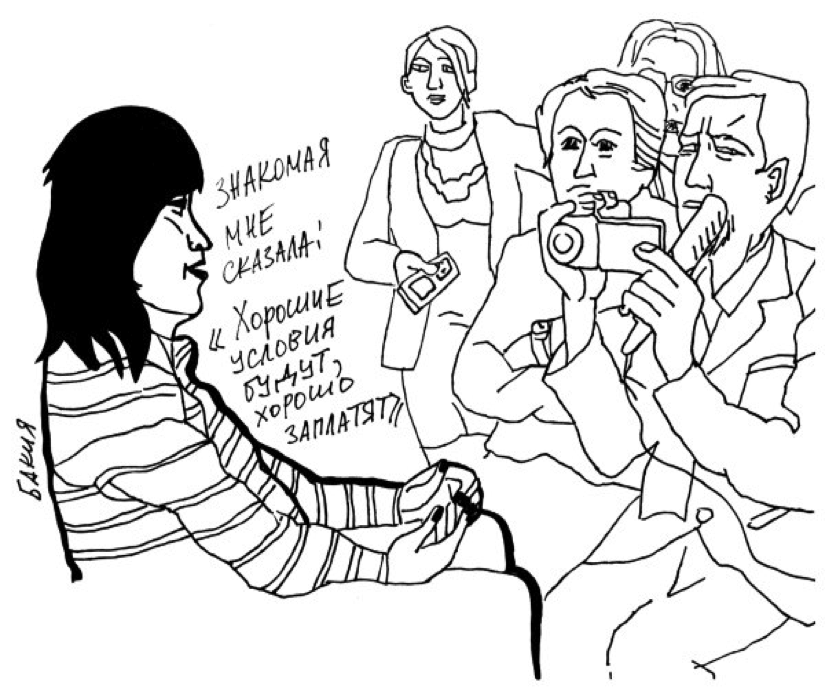
Bakiya: “An acquaintance told me the conditions and pay would be good.”
Tazhinar Ashirova, the mother of one of the slaves, Zarina, had been trying to free her daughter for several years. She had failed to get the police to open a criminal case in their native Kazakhstan. The Golyanovo police precinct in Moscow had also ignored Tazhinar’s written complaint. According to the former slaves, the police had known what was happening at the store and had regularly come to Istanbekova for bribes. When slaves ran away, police brought them back to their mistress. Realizing she could not rescue her daughter through legal means, Tazhinar had turned to activists from the Alternativa movement, who succeeded in freeing the slaves during a sudden mass raid on the store.
In addition to Zhansulu, it is believed her two sisters have also been involved in slavery. Each of them owns several stores, in which slavery has probably flourished for the past twenty-five years or so. In 2002, Zhansulu’s older sister, Sholpan, was convicted of torture. However, guided by “humane” considerations, President Vladimir Putin granted her a pardon in 2003.
In November 2012, Istanbekova and Muzdybayev were charged with false imprisonment, but the case against them was later dismissed as “illegal and groundless.” The couple reopened the Produkty grocery store immediately after the New Year and are now recruiting people to work there.
Introductions
The topic of modern slavery has long interested me. After reading an article on the Web about the freeing of the Produkty slaves, I called the Civic Assistance Committee to offer my services as an artist during the trial against slaveholders Zhansulu Istanbekova and her husband, Saken Muzdybayev. Committee staffer Anastasia Denisova told me the latest news. The women were supposed to have had a face-to-face confrontation with their former bosses at the Preobrazhenskoe police investigative department. But instead police had tried to cook up a misdemeanor charge against the victims—residing in the country illegally without registering—in order to quickly deport them back to Kazakhstan and Uzbekistan. One of the young women, who was five months pregnant, nearly had a miscarriage. Activists and the victims’ lawyers had managed to get them out of the investigative department and take them to a hospital.
After hearing this story, I went to the hospital, where I met Leila and Mutabar.
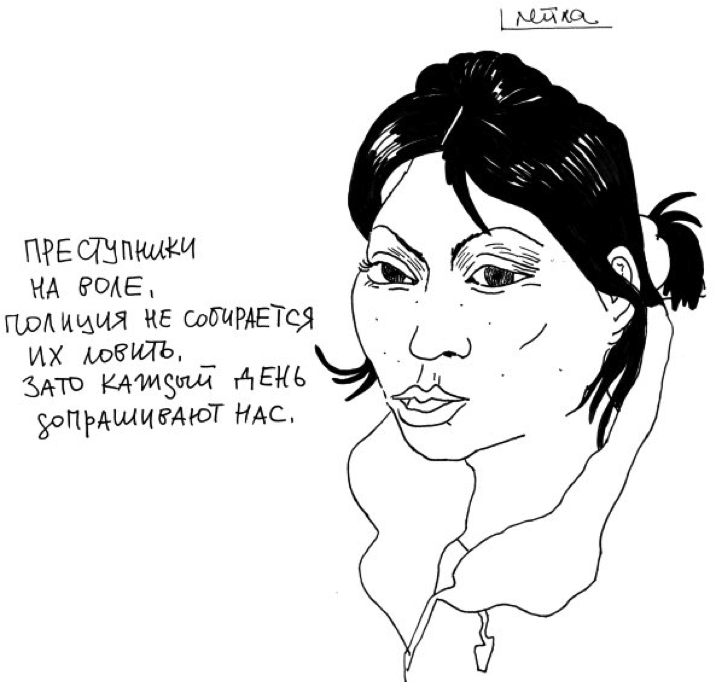
Leila: “The criminals are at large, and the police have no intention of arresting them. But they interrogate us every day.”
Leila, from Uzbekistan, is twenty-six years old. Ten of those years she has spent in bondage.
A volunteer guarded the young women. The former slaves were taken from the hospital to the Civic Assistance Committee’s office. The strong wind outside blew through even my leather coat, but the pregnant Leila slipped on the frosty pavement in low shoes and a windbreaker—she had no hat or gloves. She clung to me to avoid falling and to warm up somehow. The hungry young women ate a fast food meal at Metro Express.
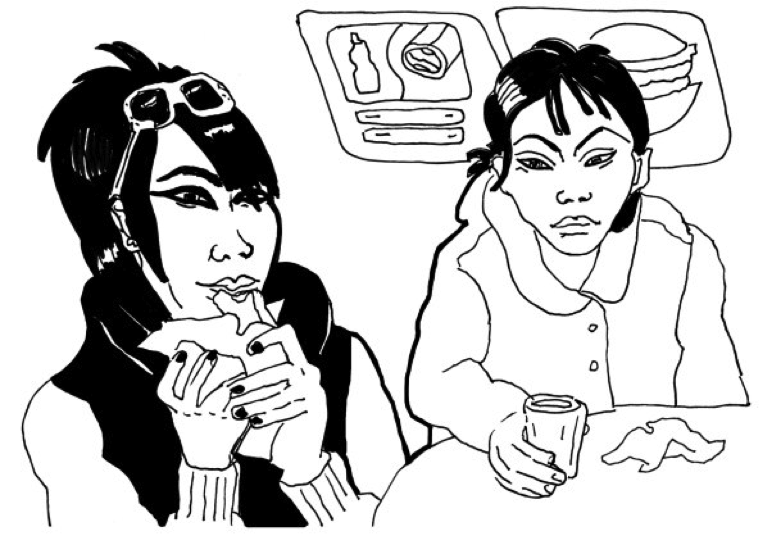
They cuddled up to each other and instantly fell asleep.
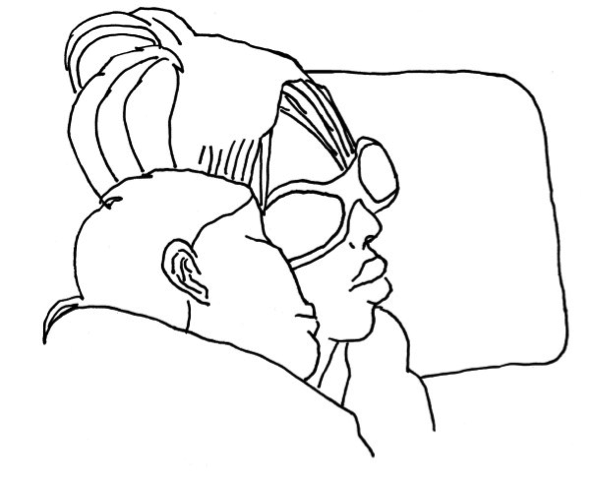
Bakiya
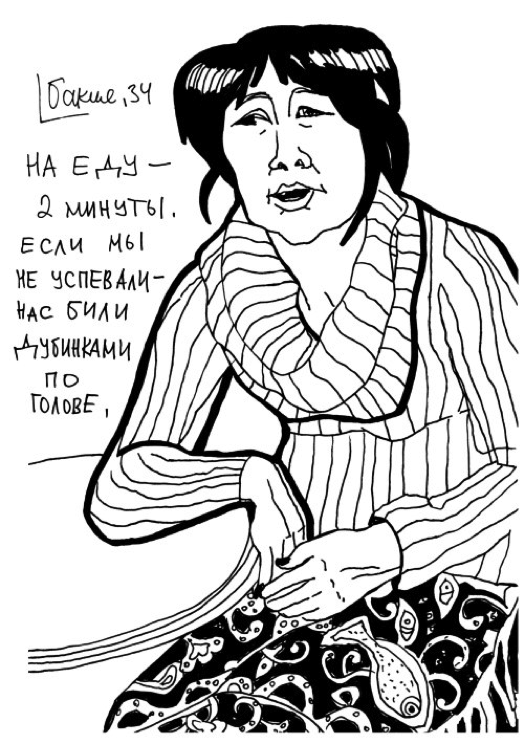
Bakiya: “We had two minutes to eat. When we didn’t finish in time, we were beaten on the head with billy clubs.”
Bakiya is thirty-four, but she could pass for forty. She has spent ten years in slavery, with daily beatings to the head and kidneys. Her front teeth have been knocked out. Her fingers are broken, and her ears torn.
Bakiya’s son, Baurzhan, is five years old, but looks as if he were two. The boy has a hard time walking: his ribcage is deformed. Until his release, Baurzhan had never been outdoors: the boy would be set on a potty and doctors believe he may have been tied to a radiator all day long. Baurzhan talks a lot, but no one knows the language; maybe he invented it. His mother saw him once every six months for half an hour. Bakiya also gave birth to a daughter in captivity who would now be around seven years old. Zhansulu Istanbekova told her the girl had died. But Bakiya thinks the girl is alive and was sold in Kazakhstan.
Bakiya said there were no fewer than thirty security cameras in the Produkty store and the slaves were not allowed to stray outside their range. They were forbidden to talk to each other. The work day began at six in the morning and lasted until late at night.
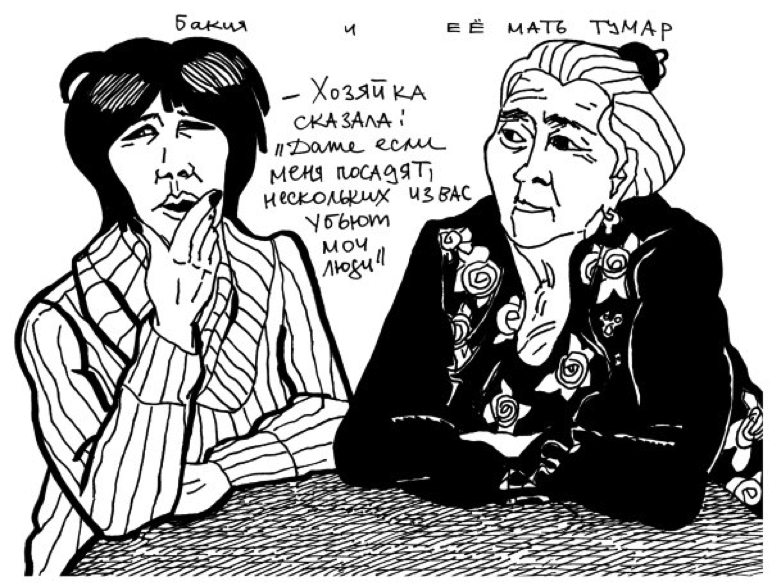
Bakiya with her mother, Tumar: “The boss lady said, ‘Even if they put me behind bars, my people will kill several of you.’”
They were often beaten unconscious, and sometimes the beatings would continue even after they had passed out. The boss lady would say, “I won’t calm down until I see blood.” The owners’ four sons were often present during the beatings. These teenagers had themselves begun pummeling their “property,” something that their parents encouraged.
The owners made the slaves inform on each other. Bakiya says she refused to be a stool pigeon, kept her mouth shut during beatings, and tried to resist. The store also had a system whereby the slaves had to “matchmake” one of their relatives—that is, lure them into bondage—in order to live more or less tolerably. Bakiya had not invited anyone to “earn good money.”
Bakiya once managed to escape. She had slept in a stairwell for three days before going outside, where she ran into a regular customer from Produkty. Bakiya told the woman her story and begged for help. The customer took Bakiya home and told her to wait. After a while she came back with Zhansulu Istanbekova. Zhansulu swore that Bakiya’s slave labor would be compensated, and they would even buy her a car. I don’t know whether Bakiya believed this or not, but she remembered her hostage son and returned to the store. Of course, back at the store she was beaten for running away, and everything continued as usual.
The activists involved in the case discovered that the Istanbekovs enjoy a fairly high social standing, and have connections among government officials and police. Several years ago, one slave had managed to escape and make it as far as the Moscow police headquarters on Petrovka Street, but she had been sent back to her owners.
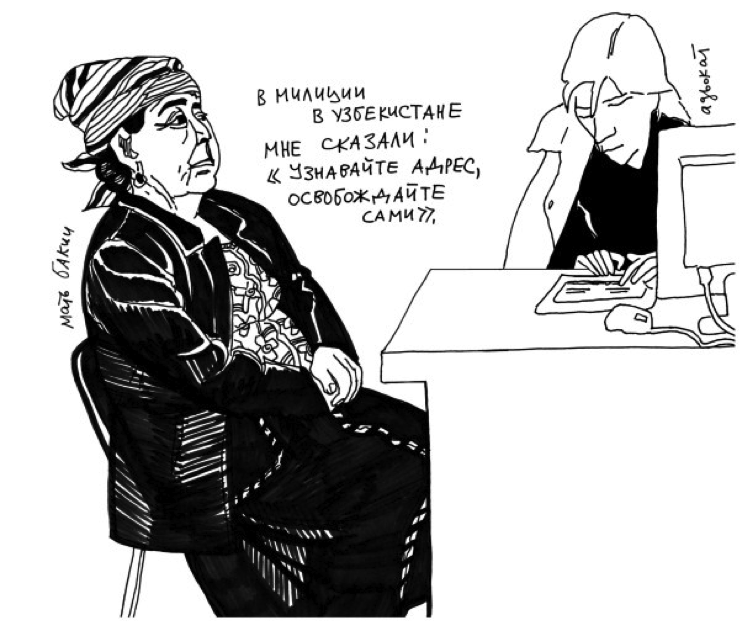
Bakiya’s mother Tumar, to a lawyer: “The police in Uzbekistan told me, ‘Find the address and free her yourself.’”
Bakiya is from a large, poor Kazakh family living in Uzbekistan. Several years ago, one of Istanbekova’s escaped slaves had got in touch with Tumar, Bakiya’s mother, and told her that her daughter was in bondage. Tumar called the police, but they refused to conduct an investigation. That time she had failed to raise the money for a ticket to Moscow.
Mutabar
Mutabar is Muslim, and sometimes wears a locket with a tiny Koran inside. In Uzbekistan, she graduated from a drama school, as well as a religious institution where she learned Arabic.
Mutabar is afraid the police will abduct her and give her back to her “owners.”
At the Civic Assistance Committee, Mutabar identifies Istanbekova’s relatives involved in the slavery case.
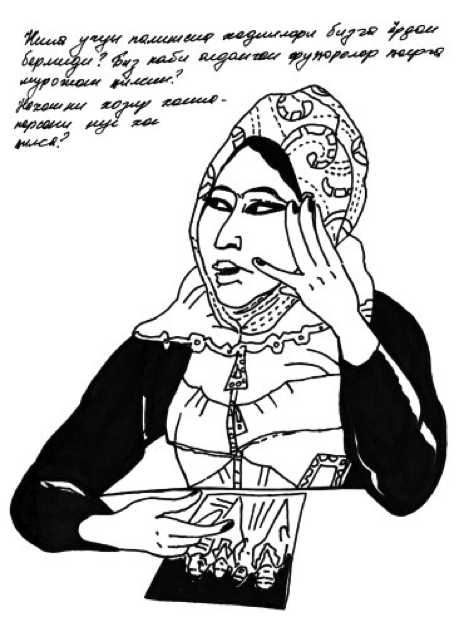
Mutabar wrote the inscription on the drawing: “Why do the police not help us? Where do citizens turn when they have been deceived as we have? Does money really decide everything nowadays?”
Mutabar’s story differs from the misadventures of the other liberated slaves.
Mutabar is an aspiring pop singer from Uzbekistan. Zhansulu Istanbekova personally invited Mutabar to come to Moscow to “appear in a video,” and Mutabar, overjoyed, took her up on the offer. She arrived in Moscow unable to speak Russian and not knowing her way around the city.
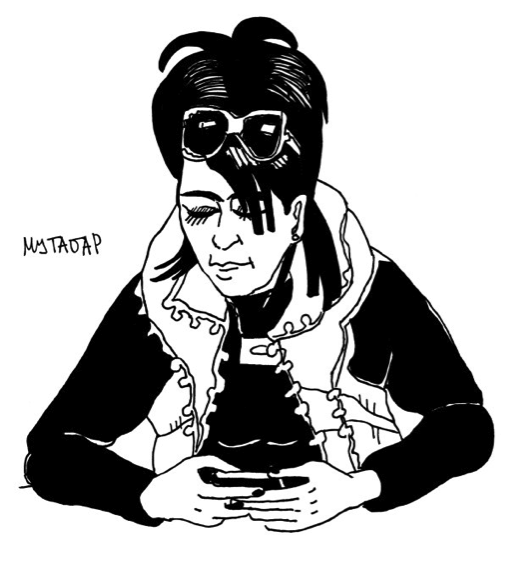
Mutabar
When she got to Produkty, she was told there would be no video shoot, and all her things were confiscated, including her passport, telephone, and laptop.
Zhansulu Istanbekova let it slip to the other slaves that she was planning to sell Mutabar as a sex slave to Arabs for good money. Only the intervention of the activists who liberated the women had prevented the deal from going through.
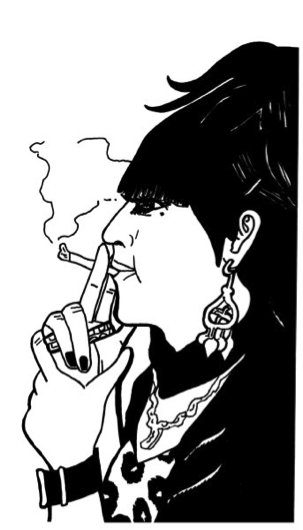
I saw photographs taken in the apartment of Istanbekova’s mother. The apartment had been renovated, but was not incredibly luxurious. The Istanbekovs have several such apartments in Moscow and Shymkent. Zhansulu also owns a mansion in Shymkent’s posh neighborhood.
The elder Istanbekova is a hundred and one years old. Some of the children born in slavery were sent to her as servants.
Leila’s Family
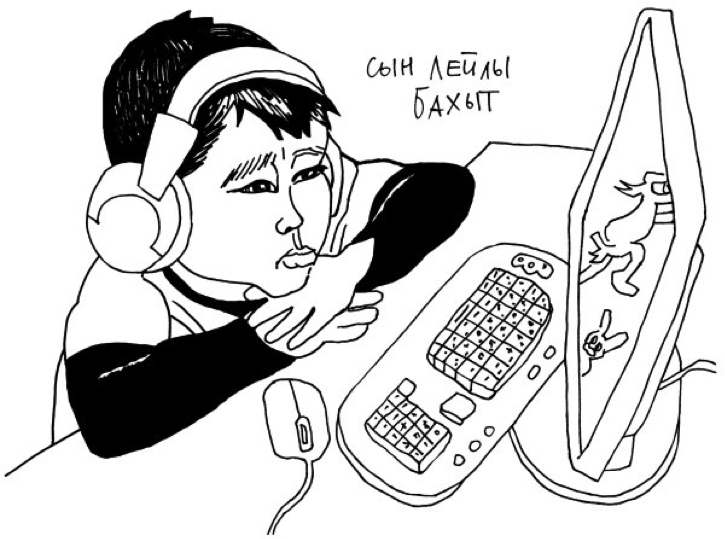
Leila’s son Bakhyt
This is Bakhyt, Leila’s son, who was born in captivity. His name means “happiness.” He is six years old. Istanbekova took his sister, also born in captivity, to Kazakhstan, and after a while told Leila that the girl had been killed.
“A cow gored her to death,” she said.
Bakhyt was left to live in the Produkty store. He became something like a plaything for the owners’ son, who was his age. When he was not entertaining the son, Bakhyt had to work: packing and carrying products, and also giving the boss lady massages. When the boy made mistakes, Zhansulu Istanbekova or her assistant Beka would beat his head against the wall or an iron safe. The boy has scars on his head from his beatings at the hands of his owners. Bakhyt saw Leila every day, but was forbidden to communicate with his mother.
When the slaves were released, Istanbekova abducted Bakhyt and the other children of the slaves, but fearing the press, she abandoned them at a train station. Bakhyt now wants to watch cartoons all day. Leila says the boy has begun smiling and even goofing off sometimes.
In 2011, Leila got a husband, Seilkhan. He had come from Kazakhstan and was working for a relative of Zhansulu Istanbekova when he happened to meet Leila. Noticing that Leila really liked Seilkhan, Istanbekova invited him to become the store’s driver and settle in the basement with Leila and the other slaves. Seilkhan took the offer. Unlike the other workers, however, he was paid a salary and not beaten, because, as a driver, he could escape.
Leila is now seven months pregnant. An ultrasound has shown that, despite Leila’s constant beatings, the child is all right. Leila believes that Zhansulu Istanbekova planned for her and her husband to work at Produkty into their old age (or until death) and for their children to become her slaves. Leila did not think about escaping, because she feared for her son Bakhyt and did not want to abandon him.
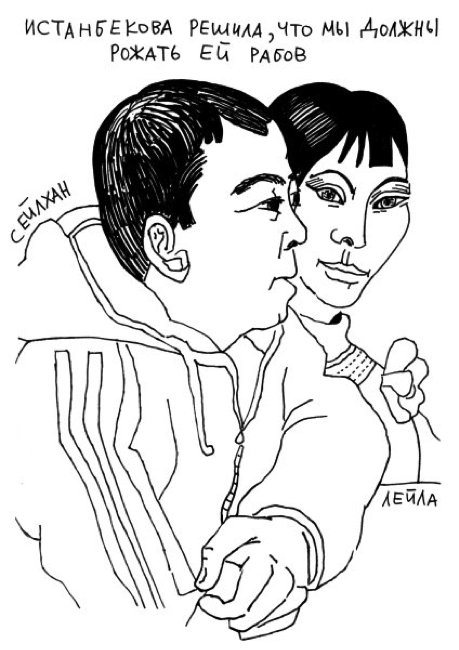
Seilkhan and Leila: “Istanbekova decided we should give birth to slaves for her.”
Zhansulu Istanbekova was from a poor family, said Leila. The other freed women say Istanbekova launched her criminal career managing brothels in Kazakhstan. Only Saltanat, a distant relative of her husband whom Istanbekova had held in bondage for seventeen years, knew everything about Zhansulu’s past. Abandoning two children born in slavery, Amir and Asel, Saltanat had fled right before the liberation of the so-called Golyanovo slaves. The freed women say she had promised to save the others and get in contact with them.
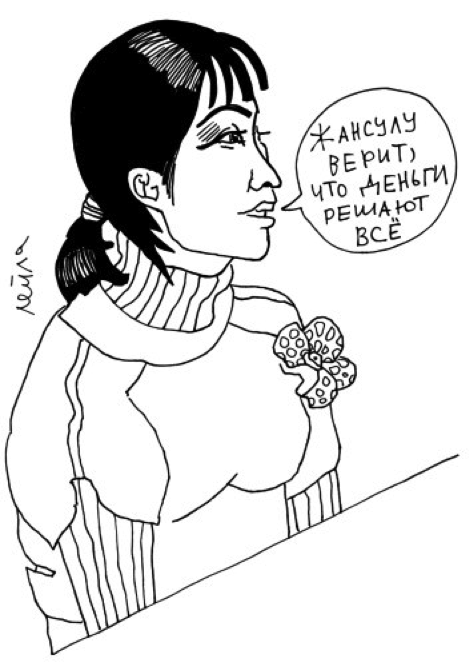
Leila: “Zhansulu believes money decides everything.”
But this had not happened. The former slaves guess that Saltanat had been captured and killed because she was a much too dangerous witness. Besides, there had been little use for her at the store. Leila and Seilkhan describe her condition: her hair had fallen out; her legs were purple from constant beatings (“At first we thought she was wearing purple tights”), and there were lumps on her legs from which blood often spurted.
Saltanat’s daughter, Asel, has no education. She had worked as a servant for Istanbekova’s mother since she was a small child, meaning that she was a second-generation slave and could not imagine what freedom and life without a mistress were like.
Zarina and Tazhinar
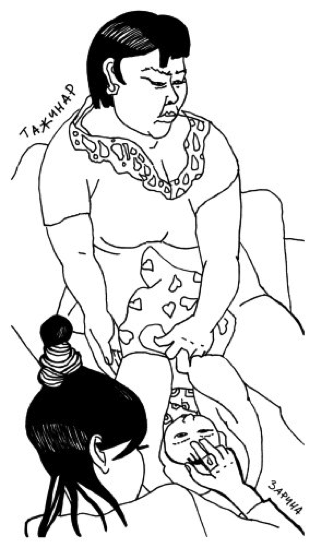
Tazhinar and Zarina
Zarina is Leila’s niece. Leila was the first to be enslaved by the Istanbekovs. Four years later, Zhansulu forced her to invite a relative to Moscow through a mixture of cunning, beatings, and, most important, the threat of separating Leila from her newborn son, Bakhyt. The fourteen-year-old Zarina was told she would work at Produkty during school holidays, but the girl wound up a slave for six years.
Zarina was born in Uzbekistan to a Kazakh family. After her husband’s death, Zarina’s mother, Tazhinar, moved with her four children to Shymkent as part of a program repatriating ethnic Kazakhs to Kazakhstan. It had not been easy for the single mother: she had to rent an apartment and work at a construction site. There was never any money, and Zarina, the oldest daughter, wanted to help her mother: aside from the rent, her younger sisters had to be fed.
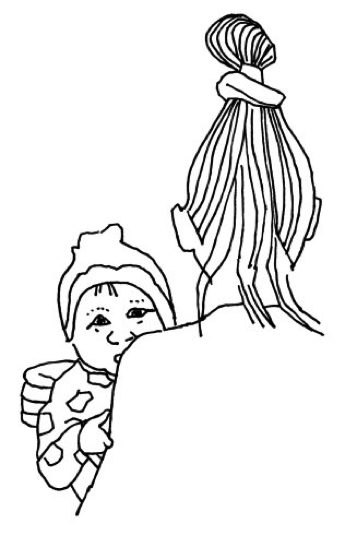
Tazhinar managed to find out about the situation at the store. In Kazakhstan, she hired a lawyer, and it turned out that he had heard about Zhansulu Istanbekova: several escaped slaves had unsuccessfully tried to have charges filed against her. Tazhinar’s attempt to have charges filed failed as well. She, her lawyer, and the other plaintiffs in the case are convinced that Zhansulu’s lover and patron Balabiyev Kairat, a former prosecutor and now head of customs in Kazakhstan, had helped quash the criminal case.
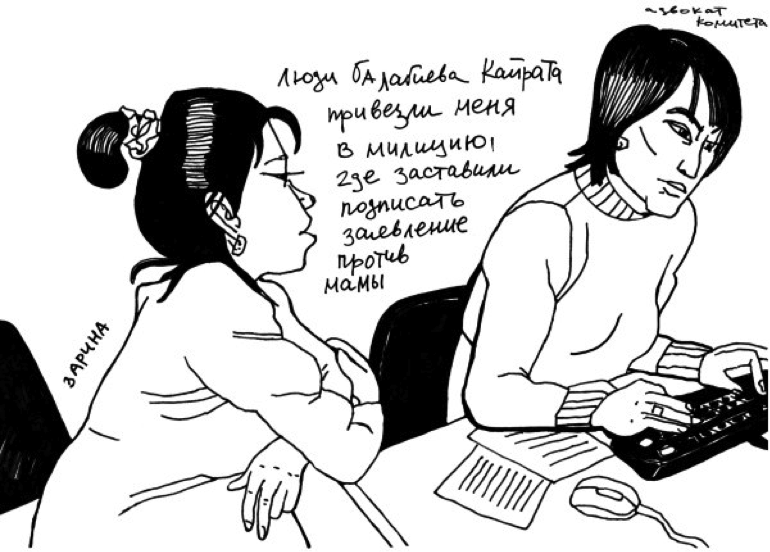
Zarina, to a Civic Assistance Committee lawyer: “Balabiyev Kairat’s people took me to a police station and forced me to sign a complaint against Mom.”
When Zhansulu Istanbekova realized that Tazhinar would stop at nothing to rescue her daughter from captivity, she decided to intermarry their families. She forced Zarina to marry her nephew (who abandoned a wife and two children in Kazakhstan). Nursultan was born from this marriage. Fearing the campaign that had erupted around the case of the Produkty slaves, the child’s father had now gone on the lam.
Zarina refused to talk about other instances of violence in the presence of witnesses. The other young women also told their lawyers about the violence only in private.
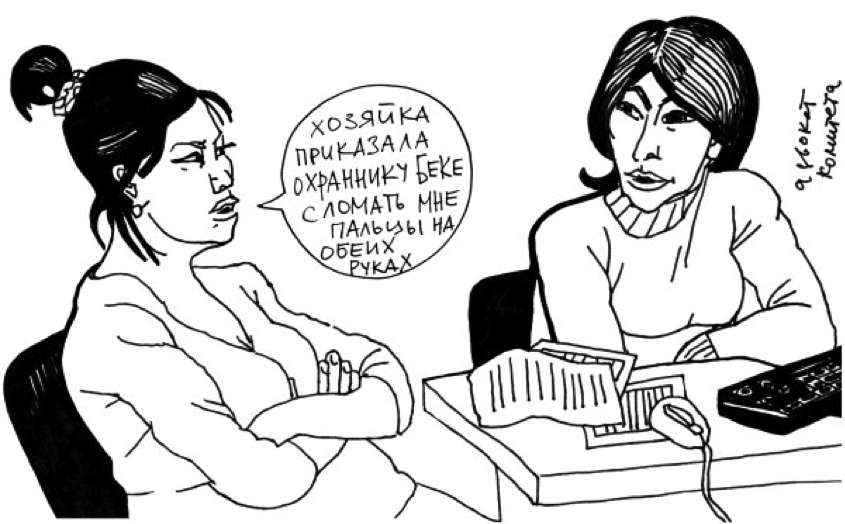
Zarina, to a Civic Assistance Committee lawyer: “The boss lady ordered Beka the guard to break the fingers on both my hands.”
The women said police regularly visited the store. On Istanbekova’s orders, they were given money: a policeman named Nasif would be given 10,000 rubles at a time, while a policeman named Dima was given 15,000 rubles (approximately $300 and $450, respectively).
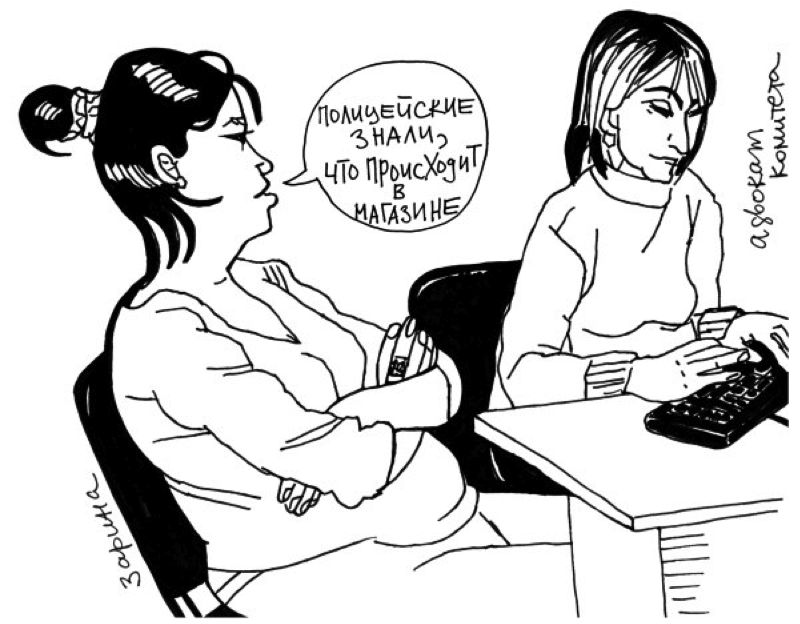
Zarina, to a Civic Assistance Committee lawyer: “The police knew what was happening at the store.”
The System
On December 11, 2012, a press conference entitled “The Case of the Freed Slaves: Developments in the Case and New Victims of the Slave Owners” was held at the Independent Press Center in Moscow.
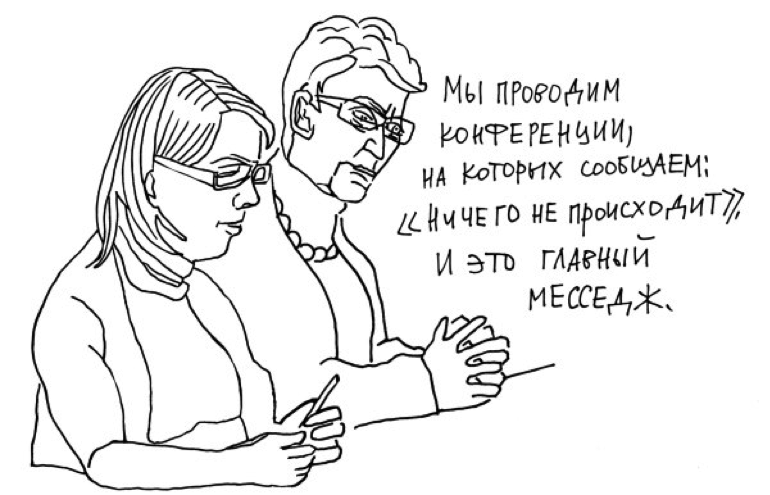
Svetlana Gannushkina: “We hold press conferences at which we say nothing is happening, and that is the main message.”
During the press conference, Svetlana Gannushkina, head of the Civic Assistance Committee, repeatedly underscored the fact that the slaves owned by the Istanbekov family were an ordinary case in a well-functioning system of slave trading and slave ownership in Russia: “An entire system is at work. An investigation of it could lead us very far.”
At the moment, only activists, Civic Assistance Committee staffers, and journalists are involved in this dangerous investigation. The prosecutor’s office dismissed the criminal proceedings against Zhansulu Istanbekova and her husband Saken Muzdybayev, labeling them “illegal and groundless.”
“A threat was passed on to Committee staffers via the prosecutor’s office: we were told not to get mixed up in this case,” Gannushkina told the assembled journalists.
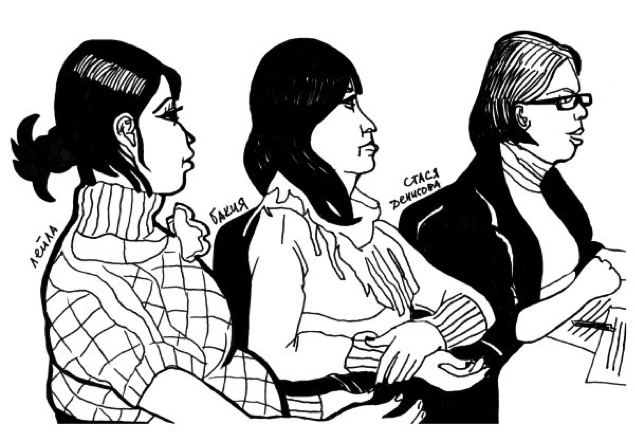
Leila, Bakiya, and Anastasia Denisova
An interesting aspect of the press conference was a Skype chat with the former slaves of Zhanar Istanbekova. Zhanar is the middle sister, and she is every bit the equal of Sholpan and Zhansulu. The escaped slaves had filed written complaints against Zhanar, but soon became convinced the Istanbekov clan was omnipotent in their native Shymkent, and it was useless to fight them. The women are now getting help from the Kazakhstani human rights organization Sana Sezim.
Zhansulu Istanbekova has been putting a lot of pressure on the victims and their relatives, alternately threatening them and offering them money, apartments, cars, yachts, etc. At the same time, she has given an interview to Kazakhstani TV Channel 31 in which she said that Leila, Bakiya, and the other former shop clerks were extorting money from her.
After the press conference, I talked a bit with Leila and Bakiya. I asked the women whether they were getting out and about in Moscow. “Yes, we get out,” Leila replied, “We go to hospitals every day.”
On November 24, Theater.doc presented the testimonial play “Liberation of the Migrant Worker Slaves from the Produkty Store” as part of a special Migrants Day event there. Danila Medvedev, an activist with the Transhumanist Movement and one of the main participants in the raid on Produkty, spoke a lot. He drew the audience’s attention to the fact that it was very easy to stumble into slavery not only in Central Asia but also in Russia. He cited some figures: “Putin in one of his speeches said that the annual turnover from the slave trade in Russia was 200 million dollars. According to the UN, from five hundred thousand to two million people are in bondage in Russia.” Danila believes that if Istanbekova is prosecuted, and the media buzz does not subside, there will be a chance to expand the fight against the slave trade in Russia.
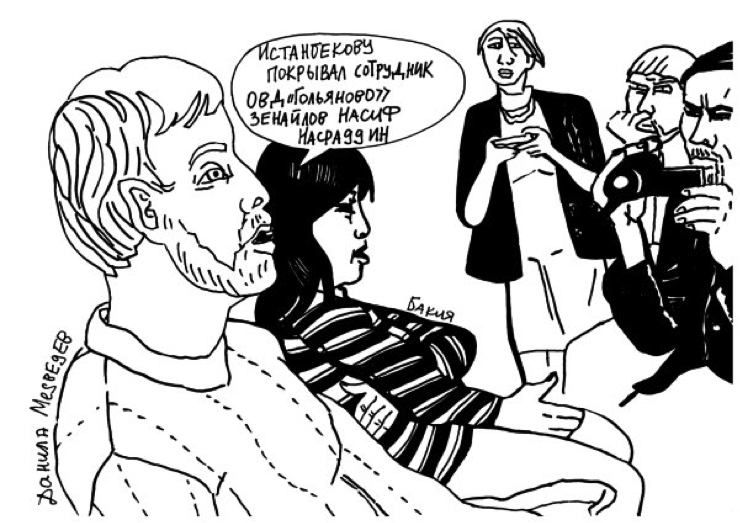
Danila Medvedev (with Bakiya seated next to him): “Officer Nasif Nasraddin Zenailov from the Golyanovo police precinct was covering for Istabenkova.”
Oleg Melnikov was the main organizer of the operation to free the slaves. He calls himself a civic nationalist, meaning he believes that all Russian Federation citizens, not only ethnic Russians, should have more rights than foreigners. Melnikov tells nationalist friends who blame him for saving the non-Russian slaves from Produkty they should travel with him to Dagestan to rescue Russian slaves there. “So far, no one has gone,” says Oleg, “People are looking for an excuse to do nothing.”
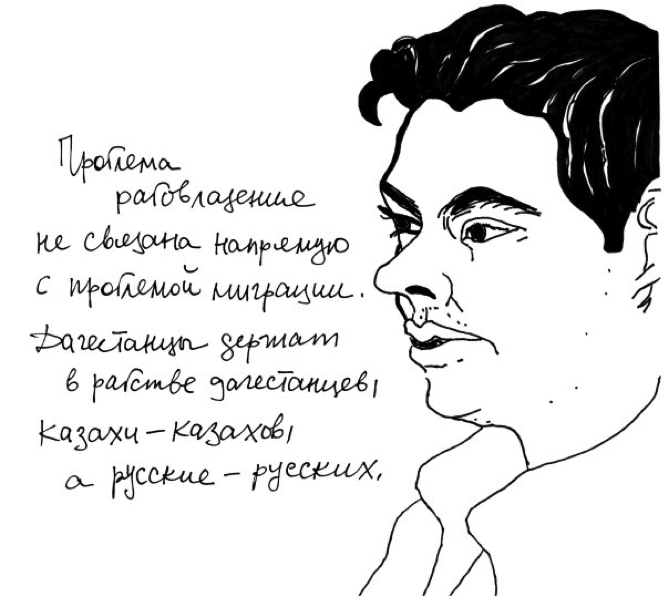
Oleg Melnikov: “The issue of slavery is not directly linked to the issue of migration. Dagestanis keep other Dagestanis in bondage, Kazakhs, other Kazhaks, and Russians, other Russians.”
I asked Oleg how he related to the issue of migrant workers in Russia.
“There is clearly an overkill with migration in Russia,” Melnikov replied, adding jokingly, “Thanks to me about ten freed migrant worker slaves have left Moscow for home.”
Before the Holidays
In order to initiate criminal proceedings against the slave owners, some of the victims had to stay in Moscow. Leila and her family were settled in a rented apartment. Bakiya and Baurzhan were put up in a hostel.
On the eve of the New Year holidays, friends and I decided to take Bakiya and Baurzhan to a pizzeria, because they almost never go outdoors and rarely communicate with people. In her two months of freedom, Bakiya has managed only to see Red Square and explore the route from her hiding place to the hospital where Baurzhan is undergoing tests. Because Istanbekova is free, it is dangerous to go out.
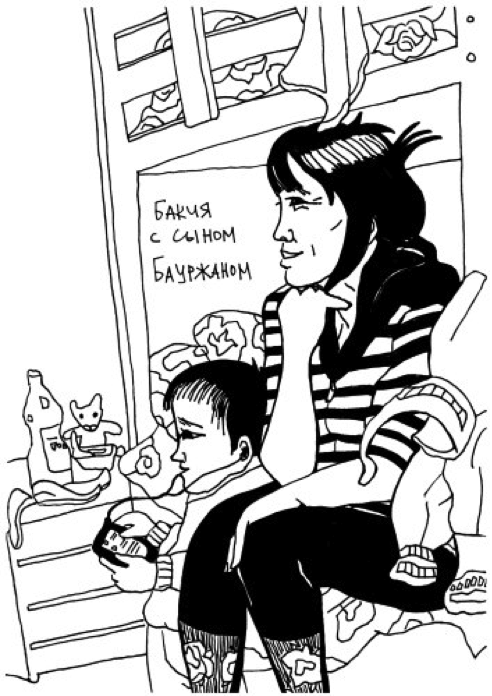
Bakiya and her son, Baurzhan
Baurzhan would only have tea: he still refuses all food except dairy products. After peering into all the teapots on the table and touching the tea in his own cup with his hands, the boy continued to explore the new space—now that he is not tied to a radiator all day, it is impossible to make him sit still. Baurzhan was intrigued by the New Year’s decorations, and one of the waitresses let him remove a red plastic bulb from the New Year’s tree. The child immediately set about playing football for the first time in his life between the tables.
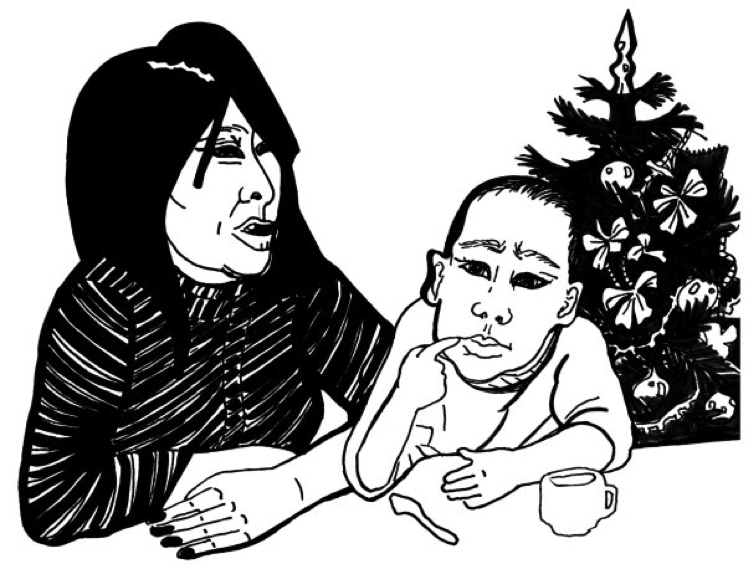
Many diners cast puzzled glances at the little immigrant boy, who played somehow oddly and awkwardly with the “ball.” Baurzhan would laugh loudly and then, for no apparent reason, his facial expression would change and, frightened and on the verge of tears, he would run to his mother and cling to her. At some point, the bulb rolled down the stairs, and the child crawled down the steps. It is painful for him to walk down and, especially, up stairs the usual way: the boy’s leg was broken when he was in bondage, and the bones have not grown back together correctly.
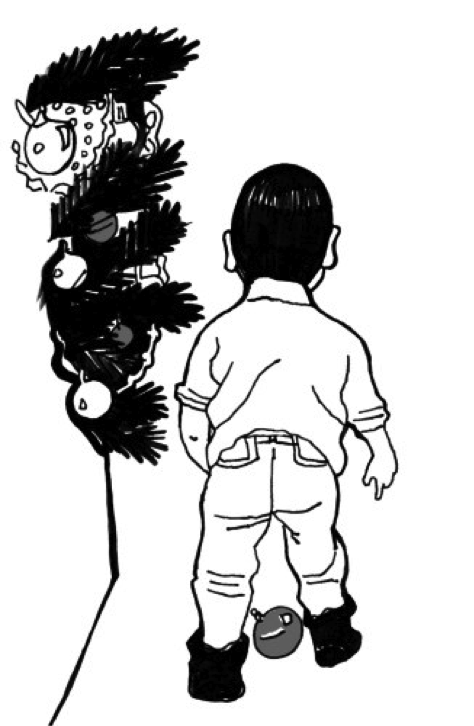
Bakiya had obviously put on some weight and looked fresher. She now bears little resemblance to the harried, wilted woman I remembered from early November. She jokes and laughs a lot, unembarrassed by her toothless mouth.
Bakiya has dreams.
“I am going to work a lot. I am going to send Baurzhan to my mother in Uzbekistan, and I will send them money. I also want to see the world, to go to Paris, to America. One should see everything in life!”
We smiled shyly as we listened to Bakiya. Under the existing system, migrant workers are destined for slavery in one form or another, not for trips to Paris.
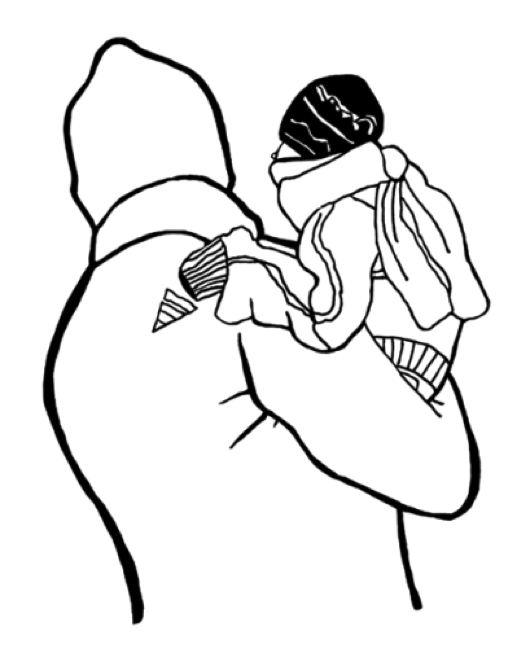
A few hours later, my friends and I had to run to other meetings. Bakiya did not want to leave. She wanted to go dancing or visiting or somewhere else. A jacket that had been donated by activists was put on the mischievous Baurzhan. A volunteer bodyguard who accompanied mother and child during the entire outing picked the boy up. We said good-bye.
Editor’s Note. Victoria Lomasko originally published this reportage under the title The Slaves of Moscow’s Produkty Grocery Store in several installments in November and December 2012 on her blog. The edited and revised version translated here was first published in Russian in the newspaper Volya [#1 (41), January 19, 2013].
© Victoria Lomasko. By arrangement with the author. Translation © 2014 by Thomas Campbell. All rights reserved.









